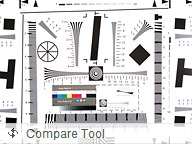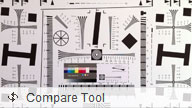Samsung Galaxy Premier review: A droid of stature
A droid of stature
Great 8MP camera
The Premier's main camera can capture stills of up to 3264 x 2448 pixels and 1080p videos, while the one on the front takes 1.9MP pictures and 720p video.
The interface is typical for a Samsung droid - a right column with the essential controls (virtual shutter key surrounded by a still/video mode toggle and a gallery shortcut) and a left column with four customizable shortcuts.




Samsung Galaxy Premier camera UI
The camera app offers a bounty of features including geotagging, touch focus, HDR mode, Panorama, burst shot (with Best photo), Share shot, face and smile detection with Best faces, low-light mode, digital image stabilization, scenes, effects and several more.
The Premier can also simultaneously record HD (1080p or 720p) video and take near full-resolution pictures (those are cropped to an aspect ratio of 16:9 to match that of the videos and what's seen in the viewfinder).
The Best faces feature snaps a burst of 5 photos, keeping track of people's faces. Later, you can pick any of the 5 photos for each person's face individually.
The Samsung Galaxy Premier's camera quality is significantly better than that of its predecessor, the Samsung Galaxy Nexus. As expected, Samsung has thrown in the same sensor as found on the Galaxy Note II and Galaxy S III, and although the image processing has been altered slightly the results are still very good. The noise levels are kept down and the amount of resolved detail is quite decent. Colors look good though they are slightly oversaturated.
Here are some camera samples taken with the Premier:






Samsung Galaxy Premier camera samples
Photo quality comparison
The Samsung Galaxy Premier has plenty of competition in our Photo quality comparison tool as most current flagship shoot stills at 8MP.
When compared to the Galaxy Note II and Galaxy S III, samples from the three devices are extremely hard to tell apart.



Samsung Premier in our Photo Compare Tool
Video camera
The video camera user interface is identical to that of the still camera. During recording, you can snap 6MP stills and use the pause button to do a multi-part video in the same file.
The camera can apply various effects to the video and there are slow-motion (1/2x) and fast motion (2x) modes. Touch focus during recording is available, with an AF button to switch back to regular continuous autofocus.
FullHD videos are recorded in MP4 files with bitrate ranging from 17Mbps to 19Mbps. The framerate is a solid 30fps and the audio is captured in stereo at 48kHz sampling rate and a bitrate of around 130Kbps.
The quality of the video is slightly worse than that of the Galaxy S III and Note II. There's plenty of detail in the videos and noise is kept well under control, but colors are off and quite oversaturated.
Check out this 1080p video sample we shot with the Galaxy Premier:
We've included a 720p video sample as well:
You can download the untouched video samples - 1080p@30fps (16s, 34.6MB), 720p@30fps (12s, 17.7MB).
Video quality comparison
The Samsung Galaxy Premier shoots 1080p videos and once again they come close to those produced by the Galaxy S III and Note II. The artificial grass looks great and there's even some texture in the blue wallpaper. Contrast is a bit low though and there's more noise in the low-light scene.
Reader comments
- lucbertz
- 27 Aug 2018
- 2mV
Is MHL support granted? Only in this review I found this phone supports MHL. Should a cheap Galaxy Nexus i9250 USB cable work?
- chixx
- 10 Feb 2013
- vIw
wat so ever its not bad.,.,.,.,.,.,
- AnonD-94711
- 30 Dec 2012
- fuD
gud phone






